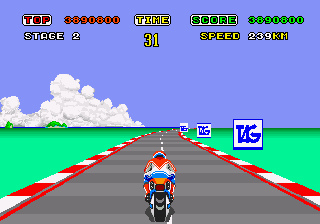I've been playing a lot of Top Gear 2 lately, and this question popped into my mind. It's pretty trivial, but it got me wondering. Older 2D racing games like Pole Position, Out Run, Rad Racer, and Top Gear, all use a very similar and distinct graphical effect to simulate driving. Is there a term for that effect? There are top-down racers, Mode 7 racers, 3D racers, but what is there a term for this particular group?








 Reply With Quote
Reply With Quote


















